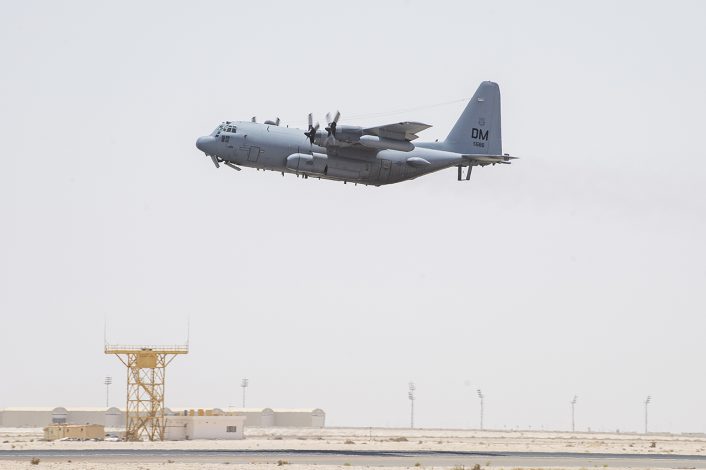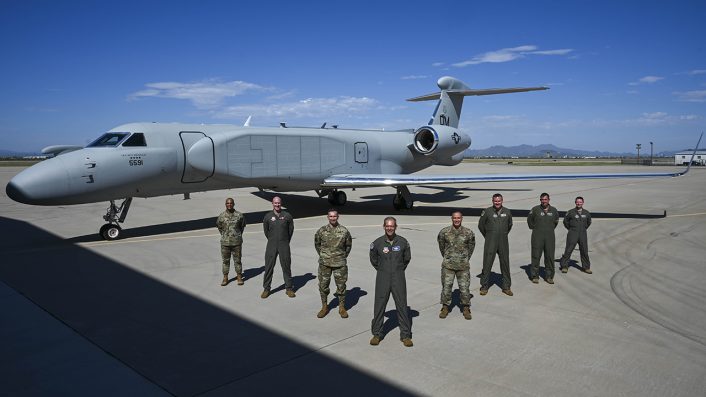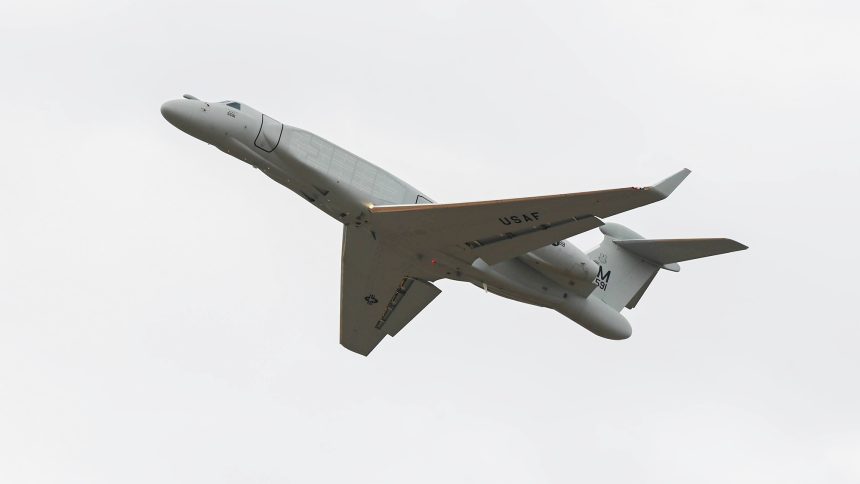L3Harris and BAE Systems believe there is a strong market for the EA-37B beyond existing orders from the United States and Italy.
The EA-37B Compass Call, based on the Gulfstream G550 and originally designated EC-37B, is the U.S. Air Force’s new dedicated electronic warfare platform, replacing the EC-130H Compass Call. The first airframe was delivered to the 55th Electronic Combat Group at Davis-Monthan Air Force Base (AFB) in August 2024, with four more having followed to date.
Five more EA-37Bs, rounding out the USAF’s order of ten aircraft, will arrive by 2028. These five airframes are currently being modified by Gulfstream with the necessary external fairings to accommodate mission equipment from BAE Systems, which will be installed and integrated later by L3Harris.
Outpacing our adversaries.
The U.S. Air Force’s EA-37B denies, degrades, and disrupts adversary C5ISRT capabilities, dominating the electromagnetic spectrum.
BAE Systems is proud to provide our warfighters the battlespace advantage. https://t.co/5lRMyM0MGL pic.twitter.com/9NgdYUyHZ9
— BAE Systems, Inc. (@BAESystemsInc) March 24, 2025
Having already secured an order from Italy, L3Harris and program partner BAE Systems are turning their eyes towards the potential for additional sales. Speaking to reporters, including Stephen Losey of Defense News, Dave Harrold (Vice President/General Manager of Countermeasure & Electromagnetic Attack Solutions, BAE Systems) said “This isn’t just an important United States Air Force platform, it’s an ideal platform for our important allies as well.”
With advanced electronic communications and networking so vital to modern warfare, electronic warfare (EW) has equally become an essential part of an armed force’s arsenal. At the same time, developments in technology allows ever more capable systems to be integrated into smaller, simpler, and cheaper packages, making them more viable for procurement by nations with more limited resources than, for example, the United States.

L3Harris is a particular pioneer of adapting civilian platforms for military special mission purposes. Along with the EA-37B, the company has also developed the MC-55A Peregrine from the Gulfstream G550 airframe. They are also the company behind the U.S. Air Force Special Operations Command’s (AFSOC) new OA-1K Skyraider II.
Using the G550 as a base aircraft drastically simplifies supply chain, training, and maintenance requirements over the use of a military-specific design. Hundreds of G550s, and an even higher number of similar Gulfstream types, operate across the globe every single day in both civilian and military service.

President of Intelligence, Surveillance and Reconnaissance (ISR) at L3Harris, Jason Lambert, states that there has been interest in the EA-37B from a number of unspecified countries. Due to the highly sensitive nature of EW technology, the most likely customers would include NATO members or other close U.S. partners.
USAF Requirements
Additional aircraft may also be in the pipeline for the USAF. Though a number have been retired in recent years, the EC-130H numbered 14 aircraft at its peak – four more aircraft than the planned EA-37B fleet. This is despite the requirements for EW increasing since the EC-130H’s introduction.
L3Harris has maintained that due to increased capabilities, a fleet of 10 EA-37Bs could offer the same level of capacity as 14 EC-130Hs, but more recent statements appear to suggest a larger fleet of aircraft is required for the U.S. military’s present and future needs.
“The common message that we’re hearing, regardless of the study or regardless of the customer organization we speak with, 10 is not enough”, Lambert noted. Studies have reportedly shown a requirement for 20 EA-37Bs. A bid by members of Congress to increase the order to 14 in 2022 failed to materialize, but a bump in numbers is likely to still be a high priority on the USAF’s procurement ‘wish list’.
Revolutionizing modern warfare.
The Sledgehammer pod delivers unmatched electronic warfare power, disrupting enemy comms and ensuring information dominance from the skies.
Learn more: https://t.co/MD8BIfKQ8C pic.twitter.com/OdKxEqPBbR
— General Atomics Aeronautical Systems, Inc (GA-ASI) (@GenAtomics_ASI) September 5, 2023
Pod-based EW on both manned and unmanned platforms have developed rapidly – the amount of performance that can now be integrated into a modular bolt on/off assembly would have been unheard of when the EC-130H was introduced. However, the benefit of having an on-site mission crew operating dedicated systems with dedicated antennae, unburdened by the size and weight limits of hardpoint carriage, is still clearly a large one.
Even on twin seat fighter aircraft supporting a weapons system operator (WSO), like the F-15EX Eagle II, EW is still only one of many tasks that the crew are required to perform. Contrast this with the EA-37B, where mission crews in the rear of the aircraft are able to focus solely on their assigned mission while flight planning, navigation, and communications are handled on the flight deck.
This same advantage is apparent in airborne early warning, anti-submarine warfare, and intelligence aircraft, all of which primarily remain the domain of larger airframes featuring mission crews while tactical aircraft and drones can act as force multipliers and operate in contested airspace.









